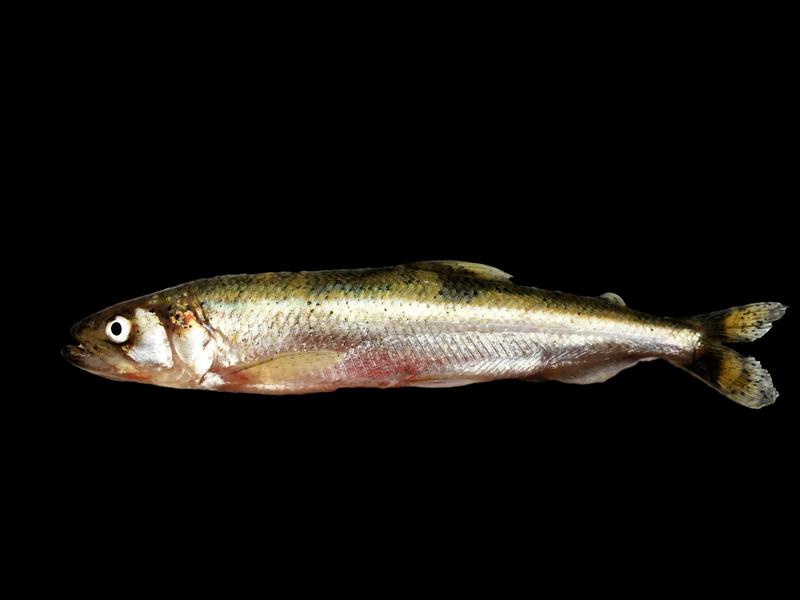Elbe Estuary in Transition: Dramatic Changes in Fish Fauna Over the Past 40 Years
A study spanning nearly four decades paints a clear picture of the transformation of fish communities in the Elbe estuary. Researchers at the Leibniz Institute for the Analysis of Biodiversity Change (LIB), in cooperation with the University of Hamburg, analysed data from 1984 to 2022. LIB doctoral researcher Jesse Theilen examined how environmental factors over four decades influenced stocks of key fish species. The findings of his study have recently been published in the journal Estuarine, Coastal and Shelf Science.
At five stations along the salinity gradient of the Elbe, standardised quarterly surveys were conducted to record species composition, fish abundance, and relevant environmental parameters. Sampling took place in all four seasons, reflecting the seasonal shifts in fish communities. Using statistical methods, long-term trends and correlations between environmental factors and fish fauna composition were identified.
Recovery and Sharp Decline
The results first reveal a recovery phase from the 1980s until around 2010. Improvements in water quality during that time boosted fish stocks, particularly smelt (Osmerus eperlanus). Since 2010, however, numbers have collapsed dramatically: overall fish stock has decreased by more than 90%. Alongside smelt, species such as twaite shad (Alosa fallax), flounder (Platichthys flesus), and ruffe (Gymnocephalus cernua) have been severely affected.
All life stages are impacted: for many species, larval and juvenile abundance has declined. Causes include the silting of crucial nursery grounds. In juveniles of pikeperch (Sander lucioperca) as well as in subadult and adult stages of ruffe (Gymnocephalus cernua) reduced growth was observed.
Over the same period, some marine species such as herring and whiting have increased, pointing to a structural shift in fish fauna which is more typical for macrotidal estuaries characterised by a large tidal range.
Environmental Drivers
“The long-term changes in fish stocks in the Elbe estuary can be closely linked to a range of environmental factors. While significant improvements in water quality in the 1990s supported the recovery of many species, conditions have clearly deteriorated in recent years,” explains Jesse Theilen.
A key factor is the rise in suspended particulate matter as a result of deepening of the Elbe estuary and dredging. Sedimentation processes have silted up essential nursery habitats, while high turbidity hampers feeding. Reduced river discharge as a result of lower rainfall has also intensified the sediment problem. Due to the lower discharge, fewer sediments are flushed out of the estuary. In addition, the salinity increases in areas that were previously less saline, thereby disturbing the ecological balance. In addition, oxygen depletion in summer months places further stress on aquatic organisms.
Scientific Context The study provides an example of how human interventions alter environmental conditions in mesotidal estuaries—river mouths shaped by a moderate tidal range—and in turn affect fish fauna. “Our data show that fish stocks come under long-term pressure when their habitats are stressed by environmental change,” says lead author Jesse Theilen.
The findings open up opportunities for further research, for instance within the Collaborative Research Training Group 2530 “The Role of Biota in the Carbon Cycle of Estuaries”. Planned projects include mesocosm experiments simulating natural conditions to investigate specific environmental factors such as food availability or salinity. Studies on the design of shallow side waters may also provide important insights into creating new nursery habitats.
Conservation Significance
The study highlights the value of long-term datasets in understanding the interplay between environmental change and biodiversity. Only through continuous monitoring can trends be detected and effective strategies developed to protect vital habitats such as the Elbe estuary. “Our data demonstrate that fish community structures change markedly over decades when their environment is subject to ongoing shifts,” Theilen emphasises. “These insights are crucial for designing targeted conservation measures for the Elbe estuary.”
Author’s Perspective
Theilen’s doctoral research at LIB and the University of Hamburg provides key insights into the dynamics of fish populations in the context of environmental change. The study was designed and led by Theilen together with Prof. Dr Ralf Thiel (LIB/University of Hamburg). Sampling efforts were carried out by Theilen, Thiel, Dr. Victoria Sarrazin, Dr. Elena Hauten, and Dr. Raphael Koll of the research training group.
Wissenschaftlicher Ansprechpartner:
Jesse Theilen
jesse.theilen@uni-hamburg.de
Originalpublikation:
J. Theilen, V. Sarrazin, E. Hauten, R. Koll, C. Möllmann, A. Fabrizius, R. Thiel: “Environmental factors shaping fish fauna structure in a temperate mesotidal estuary: Periodic insights from the Elbe estuary across four decades”, Estuarine, Coastal and Shelf Science, Volume 318, 15 July 2025
https://doi.org/10.1016/j.ecss.2025.109208
Die semantisch ähnlichsten Pressemitteilungen im idw



